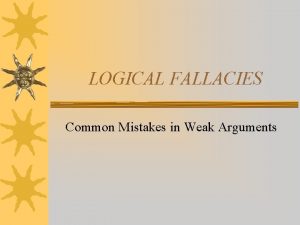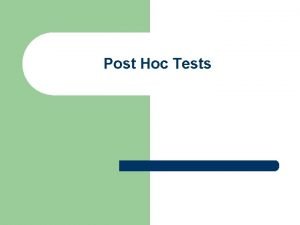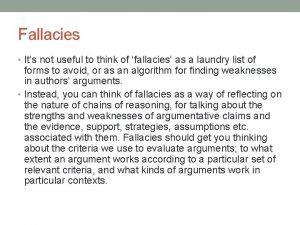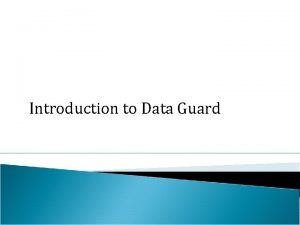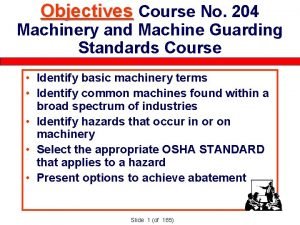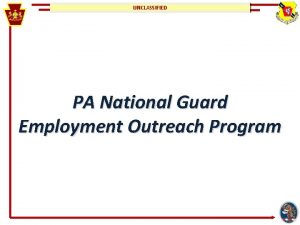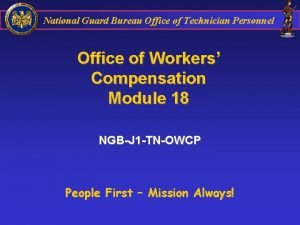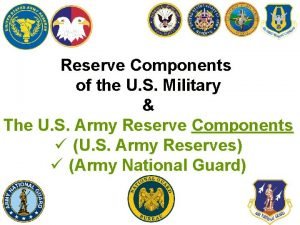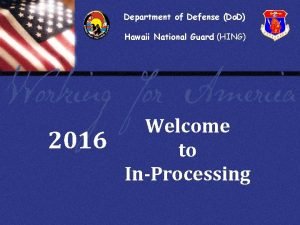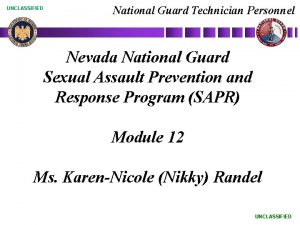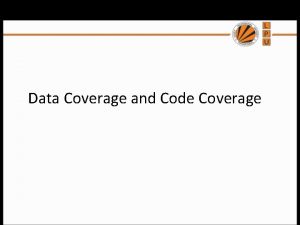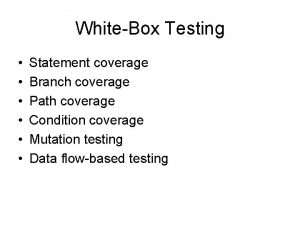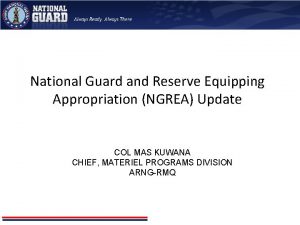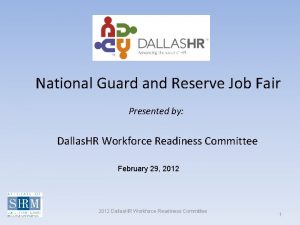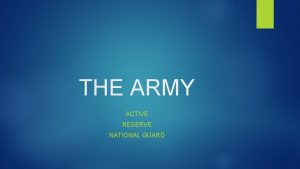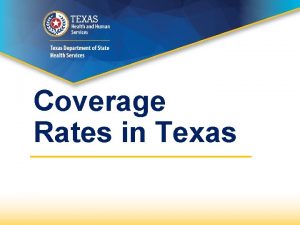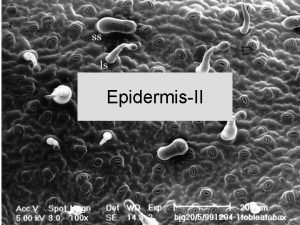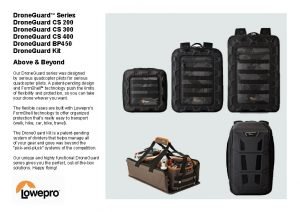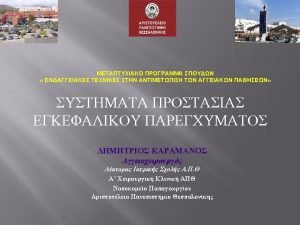Ad Hoc Report National Guard and Reserve Coverage























- Slides: 23

Ad Hoc Report: National Guard and Reserve Coverage Task Force Final Report – October 2, 2020 Commissioner Kathleen Berg (HI) Task Force Chair “Successful Educational Transitions”

Task Force • • Kathleen Berg (HI) - Chair Darcy Benway (IL) Brian Halstead (NE) Ben Rasmussen (UT) Terry Ryals (AK) Hal Stearns (MT) Rosemarie Kraeger (RI) (EXCOM Liaison) “Successful Educational Transitions”

Mission Statement The MIC 3 National Guard and Reserve Coverage Task Force (NGRTF) collects and analyzes relevant data in order to recommend whether MIC 3 protections for military-connected students already in place for the children of these reserve component service members in Title 10 status should be expanded to cover children of members in other status situations, as well. The NGRTF will present a preliminary report to the MIC 3 Executive Committee by March 31, 2020 and will present its final report to the Executive Committee by August 31, 2020. “Successful Educational Transitions”

Discussion 1. Recommendation of the NGRTF 2. Rationale for Current Applicability Ø Need, choice, and fairness 3. What has Changed? Why Now? Ø Growing use of NG&R Ø Rationale for parity with Active Duty 4. Background Ø Military definitions Ø Selected Reserve (number/location) 5. Current Need and Fairness Rationale Ø Title 10, Title 32, State Active Duty (SAD) 6. How can Applicability be Changed? “Successful Educational Transitions”

Recommendation The NGRTF recommends that MIC 3 support expansion of Compact coverage to all members of the Selected Reserve––including Traditional, Active/Guard Reserve, and Military Technician (Dual Status) members––for moves related to changes in duty station and for deployments in any active duty status––including Title 10, Title 32, and State Active Duty (SAD). Furthermore, the NGRTF recommends that determining what form MIC 3 support should take be referred to the appropriate MIC 3 Standing Committee(s) so that all factors involved in that decision can be duly considered, including costs to the Commission and to the member states, as well as the time it would take to accomplish expanded applicability to the most members of the Selected Reserve in the most states. “Successful Educational Transitions”

Rationale for Current Applicability Need Ø Large numbers of AD children who had to change schools often • 550, 000 continental U. S. • 623, 000 worldwide Ø NG&R children didn’t move • 419, 000 school-aged kids in U. S. • 431, 000 worldwide Choice: AD has to follow orders; no choice Fairness: Compact is about “leveling the playing field” not creating privileged group “Successful Educational Transitions”

What has Changed? Why Now? 1. Growing use of the NG Ø In 44 years from 1945 -1989, Reserve involuntarily activated for federal service just 4 times: • • 1950 -1953 Korean War – 850, 000 1961 -1962 Berlin Crisis – 148, 000 1962 Cuban Missile Crisis – 14, 000 1968 -1969 Vietnam War/Pueblo Crisis – 37, 000 Ø In 1991, with the end of the Cold War, AD down-sized and military bases were closed. “Successful Educational Transitions”

What has Changed? Why Now? 2. Growing use of the NG Ø In 28 years since 1991, Reservists involuntarily activated for federal service 6 times: • Persian Gulf War, 1991 -2003 – 238, 000 • Iraq, 1998 -2003 – 6, 000 • September 11, 2001 to present – Military operations in aftermath 9/11 include 960, 000 involuntarily AND voluntarily activated as of September 2018. (largest reserve activation since WWII) • Add Haiti, Bosnia, Kosovo peacekeeping and nation building Ø Reserve changed from “a force of last resort” to integrated part of military services. • Total Force policy “Successful Educational Transitions”

“The Army cannot do what it does without the National Guard. ” “The Army’s senior leaders, we clearly know the heavy load the National Guard has been carrying over the last 18 years, at both home and around the world. ” - Gen. James C. Mc. Conville, Army Chief of Staff, 141 st General Conference of the National Guard Association of the United States (NGAUS). “Successful Educational Transitions”

What has Changed? Why Now? 3. Growing use of the NG Ø In the first few months of 2020, governors in all 50 states, the District of Columbia (DC), Puerto Rico, Guam, and the U. S. Virgin Islands activated components of their National Guard – as many as 44, 500 troops – to assist with the COVID-19 pandemic. Ø More recently, governors in 28 states and DC activated more than 20, 400 National Guardsmen to assist state and local law enforcement, making the total number activated for domestic operations well over the 51, 000 Guardsmen activated for Hurricane Katrina in 2005. Ø In early June of 2000, there were 90, 000 Guardsmen on duty nationwide. Never have so many Guard soldiers and airman been called at one time for domestic missions. “Successful Educational Transitions”

Total Military Force Ref. 2018 Military Demographics: Profile of the Military Community, https: //www. militaryonesource. mil/data-research-and-statistics/military-community-demographics/2018 -demographics-profile “Successful Educational Transitions”

National Guard & Reserve Children Ages 5 -18 DB p 175 “Successful Educational Transitions”

Selected Reserve Members 802, 842 (2018 data) • Army National Guard 335, 204 • Army Reserve 188, 811 • Air National Guard 107, 467 • Air Force Reserve 68, 703 • Navy Reserve 58, 196 • Marine Corps Reserve 38, 333 • Coast Guard Reserve 6, 126 “Successful Educational Transitions”

Categories of Selected Reservists Ø Traditional – part-time, train monthly (drill) + annual training Ø Full-Time Support – 136, 750 (17%) • Active/Guard Reserve (AGR) – 78, 350 • Military Technician (Dual-Status) – 53, 000 • Active Component (Title 10) – 5, 400 The National Guard is different: Ø Dual mission – State and Federal Ø Multiple funding – Title 10, Title 32, & State Active Duty “Successful Educational Transitions”

But National Guard, Reserve, and Active Duty are the Same, too Ø All members of the U. S. Military, both Active Duty and Selected Reserve, enlist with the very specific obligation to lay down their lives when so ordered, which is a clear distinction from other U. S. citizens. Ø Members of the Selected Reserve – the Army National Guard, Army Reserve, Air National Guard, Air Force Reserve, Navy Reserve, Marine Corps Reserve, and Coast Guard Reserve – can be involuntarily ordered to active duty under federal law. “Successful Educational Transitions”

Current Need ü ü 623, 000 AD school-aged children 431, 644 NG&R school-aged children How Often. . and Who Moves? Service Total Svc Members Interstate Moves % Active Duty 1, 304, 418 434, 000 33. 2% Air Natl Guard 107, 500 923 0. 9% Army Natl Guard 335, 200 917 0. 3% Note: Army National Guard database: only 100 members gave dependent data. Total number of children reported was 176. “Successful Educational Transitions”

Choice and Fairness Rationale - Updated The Department has built (through a decade of investment and war) a stronger, more capable, better equipped, battle tested Guard and Reserve force than we have had at any time in our recent history…. For about $50 Billion a year, the Nation maintains a strong, operationally engaged National Guard and Reserve force that comprises about 39% of the Department’s military end strength for approximately 9% of the Department’s Budget. The Nation must maintain a Reserve Component that is accessible, available, and flexible to provide operational forces, when needed, to satisfy the full range of potential missions called for by our civilian and military leadership. - Reserve Forces Policy Board, Report to SECDEF, 2014 “Successful Educational Transitions”

Choice and Fairness Rationale - Updated All members of the U. S. Military, both AD and NG&R, enlist with a specific obligation to lay down their lives when so ordered (No Choice), which is a clear distinction from other Americans and warrants expanding the legal protection of the Compact currently in force for AD military to the NG&R so all military families are covered. (To be Fair) “Successful Educational Transitions”

Choice and Fairness Rationale - Updated “We have to change the culture. They are not weekend warriors anymore. They’re deploying all over the world. They have now become a critical piece of our national defense. They were a rainy day force, but now we need them every day. Everything that affects the active duty, affects them. ” Lt. Gen. Dana T. Atkins, USAF (Ret. ) Military Officers Association of America, President and CEO, June 26, 2019, at the National Guard and Reserve Family Forum in Washington D. C. What can MIC 3 do to help change the culture? “Successful Educational Transitions”

: P le b i s os ns o i t Op What can MIC 3 do to Support expansion of Compact coverage to NG&R? Ø Create appropriate legal language for state laws separate from Compact statutes. Ø Provide examples of state laws passed by members states. Ø Research and craft an effective amendment to the Model Compact Language to be proposed at a future ABM. Ø Devise acceptable dues structure, based on data, to fairly assess state members for Active Duty as well as National Guard and Reserve. Ø Find partners to help work in each state to shepherd appropriate legislation • National Guard Association of the United States (NGAUS) • Enlisted Association of the National Guard of the United States (EANGUS) • Reserve Officers Association (ROA) • Military Officers Association of America (MOAA) • National Governors Association (NGA) “Successful Educational Transitions”

Original NGRTF Motion The Commission accept the Task Force recommendation and support the expansion of the Compact coverage to all members of the Selected Reserve, including Traditional, Active/Guard Reserve, and Military Technician (Dual Status) members for moves related to changes in duty station and for deployments in any active duty status, including Title 10, Title 32, and State Active Duty (SAD), by doing the following: (1) referring the determination of what actions the Commission will take to the appropriate Standing Committee(s), which will take into consideration all relevant factors, including costs to the Commission and to the member states, feasibility and compatibility with the Compact purpose and Commission powers and duties, timeline, impact on the integrity of the Compact and workload for the Commission and MIC 3 staff, and other risks and benefits; and (2) budgeting $5, 000, with permission to request the EXCOM for more, up to a limit of $20, 000, for reasonable expenses required to explore options and initiate action(s) in support of the recommendation. “Successful Educational Transitions”

Outcome The motion offered was thoroughly discussed; many state commissioners felt they were obligated to present the matter to their state councils before committing MIC 3 support and resources to the recommendation. The motion was amended to the following, which was passed by majority vote, with two votes of no by the states of Utah and Idaho (from those who advocated for the original motion) and no abstentions. Amended Motion as Approved: That the Commission accept the Task Force report and refer it to the Executive Committee for further action. Task Force Recommendation: The NGRTF recommends that MIC 3 support expansion of Compact coverage to all members of the Selected Reserve––including Traditional, Active/Guard Reserve, and Military Technician (Dual Status) members––for moves related to changes in duty station and for deployments in any active duty status––including Title 10, Title 32, and State Active Duty (SAD). Furthermore, the NGRTF recommends that determining what form MIC 3 support should take be referred to the appropriate MIC 3 Standing Committee so that all factors involved in that decision can be duly considered, including costs to the Commission and to the member states, as well as the time it would take to accomplish expanded applicability to the most members of the Selected Reserve in the most states. “Successful Educational Transitions”

Recommendation The NGRTF recommends that MIC 3 support expansion of Compact coverage to all members of the Selected Reserve––including Traditional, Active/Guard Reserve, and Military Technician (Dual Status) members––for moves related to changes in duty station and for deployments in any active duty status––including Title 10, Title 32, and State Active Duty (SAD). Furthermore, the NGRTF recommends that determining what form MIC 3 support should take be referred to the appropriate MIC 3 Standing Committee(s) so that all factors involved in that decision can be duly considered, including costs to the Commission and to the member states, as well as the time it would take to accomplish expanded applicability to the most members of the Selected Reserve in the most states. “Successful Educational Transitions”
 Source of capital reserve
Source of capital reserve Difference between capital reserve and reserve capital
Difference between capital reserve and reserve capital Contingency reserve vs management reserve
Contingency reserve vs management reserve Post hoc ergo propter hoc
Post hoc ergo propter hoc Flawed logic definition
Flawed logic definition Post hoc ergo propter hoc
Post hoc ergo propter hoc Post hoc ergo procter hoc
Post hoc ergo procter hoc Post hoc ergo proter hoc
Post hoc ergo proter hoc Hoc haec hoc
Hoc haec hoc Post hoc ergo propter hoc
Post hoc ergo propter hoc Post hoc ergo procter hoc
Post hoc ergo procter hoc Snapshot standby
Snapshot standby Difference between data guard and active data guard
Difference between data guard and active data guard Upper hood guard and full diameter saw guard
Upper hood guard and full diameter saw guard Osha power tools must be fitted with guards and
Osha power tools must be fitted with guards and Army national guard ged plus program
Army national guard ged plus program National guard employment network
National guard employment network National guard
National guard Reserve components
Reserve components Little rock nine national guard blockade
Little rock nine national guard blockade Hawaii national guard hro
Hawaii national guard hro Writing a status report
Writing a status report Federal reserve rothschild
Federal reserve rothschild Capital and revenue reserve
Capital and revenue reserve




